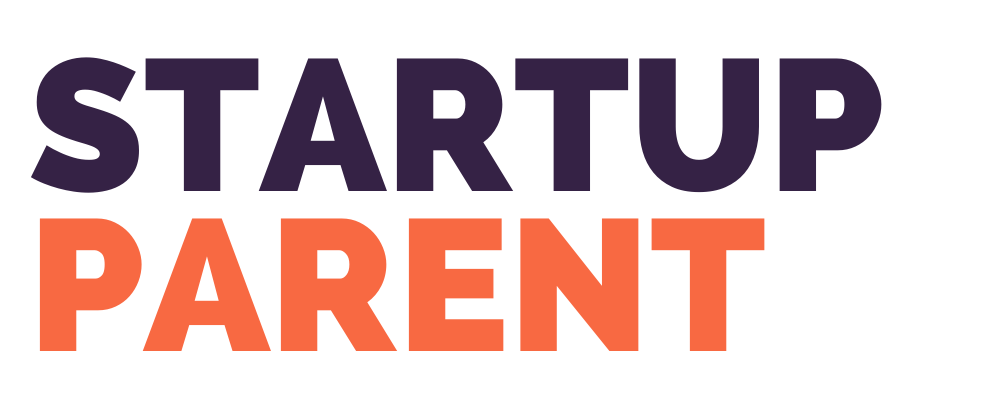This guest post comes from Kimberly Crossland of Savvy Copywriters. She’s a founder who built a business from scratch and also has kids at home—in fact, she wrote this seven weeks postpartum while her C-section scar was still fresh. Here’s her wisdom.
There’s no sugarcoating it. Recovering from a C-Section is worlds different than recovering from a vaginal birth.
Each are difficult in their own right but the pains, the aches, and even the duration are unique for each.
Sarah already covered preparing for the first 30-days postpartum after a VBAC. Now it’s my turn to chime in with ideas for how to prepare yourself for the first 30-days postpartum after a C-Section.
At the time of writing this, I’m 7-weeks postpartum after having my second C-Section. My first C-Section was only 20 months ago and both were very different. The first was required because my baby boy was breech with no chance of turning. My second was elected because it seemed like the safest option after already having a C-Section. Both were emotionally and physically challenging – and both were amazingly beautiful in their own right.
Here’s what I wish someone had told me and prepared me for before delivering in the OR.
1. You’ll Need to Pack a Different Type of Hospital Bag for a C-Section
If you’re anything like me, you’ve spent hours, if not days, browsing Pinterest for the perfect hospital bag checklist. I did this with both planned C-Sections.
The first time, I way overpacked. I was the girl who had the husband dragging a full sized suitcase through the hospital hallways filled with a bunch of stuff I didn’t need PLUS a laptop bag and an empty second suitcase to carry home all the diapers, swaddles, and washcloths we could snag.
The second time around, I vowed to not be that girl. Still, I looked and looked (and looked) online for the perfect checklist. Every one of them was a little bit different, which only added to the confusion.
On the evening before delivering, I put my toddler to bed, pulled out the hospital bag, and spent another two hours pulling everything out, fishing through my closet, putting things in, and reevaluating every single item. This is normal (or so I’m told).
For what it’s worth, here’s what I’m glad I had with me
- Yoga pants – Every C-Section checklist I saw said NOT to pack yoga pants because they’ll rub on your incision. But, I’m not a nightgown kind of girl. I like sweats and a t-shirt any day, so I ignored them and was glad I did. If the pants rubbed against my C-Section, I didn’t feel it because I had a sanitary pad in place to shield the staples. Problem solved.
- Robe – Those hospital rooms get cold. Wrapping up in a cozy robe felt amazing! And it made it easier to push aside when it was time to nurse my newborn.
- Diffuser – It was only recently that I jumped on the essential oils bandwagon and I haven’t looked back since. Prior to delivering, I ordered Gentle Baby from Young Living and diffused it my entire hospital stay. I have no idea whether or not it calmed my baby but I did have numerous nurses and doctors comment on how much they appreciated the delicious smell over the hospital stench.
- Makeup – Because you’ll want to feel pretty while everyone snaps your picture with your newest bundle of joy.
- Body wash – The hospital provided me with some body wash but I opted to use my own. It smelled like home. Normalcy is a gift during this season of life.
- Toiletries – This is a given but still important to remember. I wrote out everything I’d need on a post-it note and stuck it to my mirror, so I didn’t forget an essential item.
- Snacks – Okay, I didn’t pack these, but I did receive some from a few of my family members who stocked my “pantry” (our pet name for my hospital room closet) full. I encourage you to do the same. Having the cookies and grapes around at midnight is essential when you’re battling the oh-so-real nursing hunger pains.
Here’s what I was glad I left at home
- Thank you cards – It seems like a good idea to knock out writing your thank you cards while you’re in the hospital but here’s the reality – you’ll be on some sort of strong pain killer, and if it affects you like it did me, you’ll barely be able to hold a pen to sign the birth certificate paperwork, let alone write a thank you card.
- My laptop – It’s hard to look at a bright screen through sleep deprived eyes. Leave it at home.
2. Plan for How You’ll Say No
This isn’t a surprise to anyone. After your baby arrives, you’ll be sleep deprived to your core. That’s obvious. What is less obvious is that in addition to sleep deprivation, your body will be sucking what little is left of your energy dry in an attempt to heal after you’ve had your organs beat up, moved around, and then put back together. You’ll have foot long (give or take) incision that needs to stay closed.
Most people, when they ask to come get in their snuggles, won’t remember that. Be prepared to say no without guilt. You might even want to start now by publicly posting to Facebook that you aren’t accepting visitors, or if you are, what you expect of the people who come to see you. Delegate certain chores, but turn down anything that requires you to play hostess.
3. The Emotions Are Normal
During the weeks leading up to the C-Section, I had a lot of emotion. I was elated that the baby was finally arriving, but mournful that I wasn’t going to experience the Hollywood style delivery. I was happy that there was a medical solution to safely deliver my babies, but devastated that my birth story would never include X hours of labor followed by X number of pushes.
Postpartum wasn’t any different. I was celebrating, but I was also grieving. C-Sections feel a little more violent than a vaginal delivery. Instead of your baby arriving into the world the way God intended, he’s ripped from your body in a sterile, cold environment. It didn’t feel natural – at least not for me.
I know not everyone will share this same sentiment. Some women are happy – relieved, almost – to have their baby brought into the world in this way. Some moms even elect this birth method. But if you’re anything like me, you’ll feel a sense of sadness before your scheduled date, and maybe even afterward. These emotions are normal. Embrace them for what they are.
4. So Are The Uneducated, Snarky Comments
What’s also normal? Carelessness. Other people’s carelessness, more specifically.
After both C-Sections, the most common question I got was, “Why?” Why did I have to get a C-Section instead of go about things the way God intended? Sometimes the question was asked out of a place of concern. More often, it came across laced with judgement (especially from people of older generations).
At first, these questions hit me hard – probably because I was already neck deep in hormone swings and my own emotional response to having had a C-Section (see point #3). I didn’t want to put an explanation of my baby’s health history on repeat. I wanted to focus on the outcome; not the procedure. (And dammit if I hate calling the birth of my child a procedure.)
It took me way too long to realize that these types of snarky comments were born out of ignorance. After letting too much anxiety creep in every time I was asked, “why,” I determined the best response was to practice my own ignorance. Focus on what matters – your baby arrived in the best way possible for him (or her) – and ignore the opinions otherwise.
5. You’re Going to Need Help And That’s Okay
As business owners, we’re tempted to put up a front of strength. I can delegate like a champ, but reach out and let someone know that I am unable to do something? No way. That’s a sign of weakness and entrepreneurship paired with motherhood isn’t for the faint of heart.
Sound familiar? Then girlfriend, you need to give yourself some grace. Easier said than done, I know, but this isn’t the time to keep up a strong front.
People want to help. The problem is, most people won’t know how – especially if they’ve never had a C-Section before. Make it easier on you to accept help by making a list. This list can be chores you’d love someone to take over while you heal, OR of the things you don’t want help with. For example, my mother-in-law stayed with us while my second son was born. She asked what she could do while I was gone and instead of rattling off a long list of chores, I simply said, “anything you want, except for my laundry.” I didn’t want anyone touching my unmentionables or trying to sort and put away my clothes. Beyond that, she could clean and cook to her heart’s content.
Get specific about the kind of help you need and write it down. When someone asks, give them the list and let them choose how they want to help. You’re recovering from a major surgery. Focus on your health over your to do list.
6. Buy Extra Sanitary Pads
You probably already know that you can’t use tampons after giving birth, so you’ll need some pads. But, different for C-Section moms, you’ll need a few extra sanitary pads on hand. When you put on pants, your pantline will rub along your incision. Putting a sanitary pad over your incision will eliminate the friction and let you get back into your Jessica Simpson maternity jeans again faster. Hooray for feeling cute when everything around you is a mess!
7. Practice Your Roll
After my first C-Section, they let me stay in bed for the first 24-hours. Things have changed and now, you’re made to get yourself out of bed only 12 hours after surgery. Although that might be the best thing for you healthwise, it’s no easy feat.
Getting out of bed will continue to be difficult for the first week after giving birth, at least. That makes those middle of the night feedings a little more challenging, so you’ll need a strategy for how you’ll get up. The best way I found? Rolling.
Start by rolling to the side. Then, grab the handle, place the bottom of your foot on the bed and use you leg muscles to prop yourself up while holding onto the side bed rail.
This approach worked well for me while I was in the hospital, but 3-days later, I still couldn’t use my abs to sit up and get out of bed. So, at home, I had to simply roll my bottom half all the way out of bed and then stand up from there. It was quite a sight but it worked until I was healed enough to get up normally.
8. Download a Fitness App
In business, we have accountability partners. Postpartum, we need the same thing. Enter: The fitness app.
As a new mom, it’s beneficial to have someone else keeping an eye on how you’re treating your body during recovery. You need someone to keep you active but also to stop you from being overly active. It’s tempting to swing too far in one direction or another.
I use Strava to track my mileage and my family (including my incredible 96-year old grandma) follows me to give me kudos every time I log some miles. These same family members also scold me when I push it too hard, like I did while trick-or-treating with my son one-week after delivering. Having them on my side and knowing that they are watching keeps me going at a sensible pace.
9. Laugh Often
One of the best but most painful moments in the hospital was when I had my mom and cousin visiting. I don’t remember what was so funny but I couldn’t stop laughing. Although my incision hurt, my soul felt amazing.
Before you give birth, make a list of people who will bring a smile to your face and then invite them to the hospital. These moments make all the difference to your emotional recovery.
You’ve Got This!
This is your birth story and it’s going to be beautiful. You’ll get through the recovery (the first three days are the hardest) and be amazed at how quickly your body repairs itself. With that said, give yourself grace to accept the offers of help and enable your body to heal.
Did you have a C-Section? What would you add to this list?
 LEARN MORE ABOUT KIMBERLY CROSSLAND
LEARN MORE ABOUT KIMBERLY CROSSLAND
Kimberly Crossland‘s career can be described in 3 C’s: Copywriter, Content (Marketer), and Communications (Enthusiast). She works with vigor, enthusiasm, and unnatural obsession to help entrepreneurs succeed. Kimberly thrives on coming up with creative new marketing ideas (especially those that involve wordsmithing), but she gets equally jazzed by watching tangible successes that come out of a campaign.


I have had 4 c-sections and found that Depends brand of Adult underwear were and are a lifesaver in the first 2-3 weeks p until your bladder muscles get stronger
Depends were awesome for me, as well — they’re so useful to have, especially in those early days.
THE hardest thing after c-section for me was walking up the stairs. if your house has stairs, try to figure out how you can stay mostly on one level.
Back scratcher for your legs! 🙌🏼